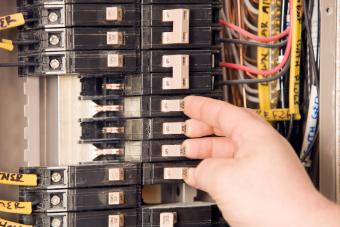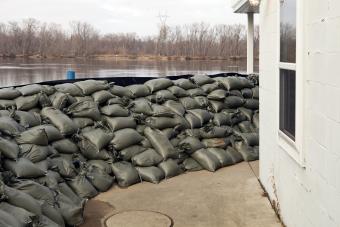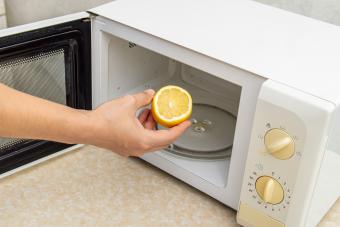
No matter how prepared you feel for extreme weather, Mother Nature can still do some serious damage. From raging wildfires to massive mudslides, extreme weather events are on the rise.
With flooding, you don’t always have days to prep your property. So do what you can in the aftermath. Learn how to cleanup a flooded house and the preventative steps you can take to mitigate damage in the future.
Flood Cleanup Tips to Add to Your Toolbelt

Whether it’s a few inches of water from a leaky pipe in your basement or a 100-year-flood that tries to steal your car, any flood cleanup will run smoothly if you check these steps off your list.
Get Yourself to Safety Before Anything Else

With any crisis, it’s important to remember that things are replaceable, and people aren’t. Don’t start moving documents upstairs or barricading doors with towels if there’s already substantial flooding — especially if it’s from a weather system and not appliances or pipes.
Don’t wait for flood waters to reach your knees before you head to safety. Pay attention to your area’s news and alert systems to see if they call for an evacuation. But when the water keeps rising, don’t wait for someone else to give you a sign. It’s better to be safely tucked away and find out nothing happened than to get stuck.
Once It’s Safe, Turn Off Your Electricity/Water/Gas

Each flooding situation is unique. Some you can address right away, and you may need to wait awhile for others. Only if it's safe to do so, access your breakers and turn the electricity off. If it isn't, wait for the all-clear from a professional to re-enter your home. The last thing you want is an accidental toaster in the bathtub kind of situation.
This is also really important if you have to unplug and remove appliances or electronics, or if the flood waters are able to reach your wiring. Additionally, turn off any gas and water at the breaker to be extra careful. When cleaning up a flood, it’s always safety first.
Don't touch anything electrical if it is wet. Any time you're in doubt about how to proceed after flooding, call a professional. It's always better to be safe than risk injury or death.
Document All the Damage & Contact Your Insurance

We know that when there’s a mess, the first thing you want to do is get in there and start cleaning up. But if you want to make any home or auto insurance claims, you need to thoroughly document all the damage you find. Take pictures and write down the price estimates for the amount of damage.
Depending on your insurance company, it might be difficult to get your claims approved if you don’t have physical evidence of what the flood damaged and how severe it was. So, cover your case by taking tons of pictures.
Remove the Floodwaters & Clean With Soapy Water

If the water hasn’t cleared out on its own, you’ll need to get rid of it before you can assess the damage. You can use sump pumps to suck the water up and out or go for an old-fashioned sweep and bucket method. Either way, you need the water gone so you can get to work on managing the mess.
Flood water could be full of sewage, or it could bring in debris or critters from outside. Protect yourself and your health by cleaning everything with soapy water or dish detergent. Use brushes, sponges, mops, and the like to get a deep clean.
Always wear protective gear when cleaning up flood waters. Wear respirator masks, protective clothing and boots, and heavy work gloves to keep you safe.
Decrease the Chance of Mold & Mildew

You have a small window of time before mold and mildew will start growing in your stuff. If it has been over 48 hours, mold and mildew have definitely settled in, and it might be too late to fix anything. But if you can get in there safely during that short period, mitigate damage by moving things like bedding, clothes, and furniture to dry areas outside to help them air out.
If you’ve got carpet, it's a big concern. After a flood, remove and replace all carpet pads. You might be able to salvage it by tearing open the carpets in small sections and putting large fans to air out underneath it. However, there’s still a chance you’ll need to have your home completely re-carpeted.
Disinfect All Surfaces

Once the flood water is gone and you've removed any items that might already be moldy, you need to disinfect all hard surfaces. Use a bleach water solution to wipe walls, sinks, bathtub, counters, floors, cabinets and drawers, appliances, and all the other hard surfaces in your home. You should also wash dishware and sanitize it.
Wipe other personal effects down with a bleach solution of a 1 cup bleach to 1 gallon water ratio to stop mold in its tracks.
Discard Anything That Can't Be Cleaned

If items like mattresses or upholstered furniture have absorbed flood waters and you can't clean them, discard them. If left to dry, these items will grow mold and mildew.
Launder Cloth Items

If items like bedding or clothing have come in contact with flood waters, launder them when it's safe to do so in your washer or at a laundromat. If you can't wash the items or they already show signs of mildew, discard and replace them.
Throw Away Any Food That Has Come in Contact With Flood Water

Throw away the food from your fridge and freezer if the power was out. Also, throw away any food (including in unopened cans) if it has come in contact with flood waters. You should also throw away any items like foil or plastic wrap if they've been in contact with flood water.
When Should You Call a Professional?

The problem with flooding is that you can think you cleaned everything up. But mold and mildew are insidious, and they’ll pop up weeks afterwards. So, if you’ve had carpet, wall, cabinets, and wood flooring damage, you’ll need to hire a professional to further assess the structural integrity of everything. At the most, they’ll help you make a plan to gut the old stuff and install new things.
Also, if you’ve had a substantial flood and you couldn’t clean up for days, make sure you get your HVAC system checked out by a technician before using it, because it could have molded as well. Turning it on will just spray mold spores throughout the house.
4 Steps to Minimize Flood Damage

You can’t stop flooding entirely, but you can better prepare your home. Decrease the chance of having serious flood damage by taking these preventative measures: store sandbags, install backflows, keep important things out of the basement, and move appliances/outlets.
Sign up for our newsletter featuring all the latest stories and products we love.
Keep Some Sandbags in Storage

If you live in hurricane region, then you know how helpful sandbags can be. Keeping a couple of sandbags in the garage will mean that you have them on hand in case of a leak or projected flooding. Stack them in front of your entrances or doorways, and they’ll help absorb the floodwater.
Install Backflow Valves

Backflow valves are super important to have in the water-using appliances. Things like toilets, sinks, and showers should have backflow valves installed so that flooding in the sewage system can’t relieve the pressure by flowing into your house.
Don't Keep Anything Worthwhile in the Basement

Basements, for all that luxurious storage space, are the worst place to store your documents, childhood mementos, and old photo albums. It’s usually dark, damp, and prone to flooding. Remove everything you care about and put it somewhere higher up.
Get Endangered Outlets or Appliances Moved

If you’ve got problematically placed outlets and appliances like air conditioners and washer and dryers, contact the appropriate professionals to rewire/reroute the hookups to better, less endangered spots in your house.
When the Flooding Starts, Save What You Can

When it floods, there’s only so much you can do to prevent damage. You probably won’t be able to save everything, but if you follow our checklist, you just might keep your favorite pieces from getting damaged.







